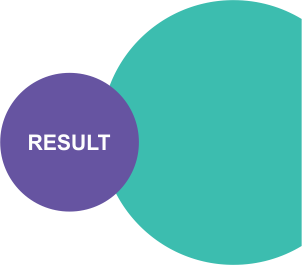| |
| ENVIRONMENT PERFORMANCE |
| WATER |
|
|
| Water Conservation Initiatives |
|
| |
Water Conservation
at API Manufacturing
Unit-5 |
| Reduction of fresh water usage ranks high on our sustainability list and an alert was raised when the groundwater utilisation of API Manufacturing Unit-5 touched a high of 1,290 kl per day in FY12. We rolled up our sleeves and undertook a target to reduce the fresh water consumption by 50% i.e. 650 kld by FY15. |
| Extensive studies were conducted and multiple options evaluated. Among them were retrofitting the existing system, use of innovative technologies like electro coagulation, a high efficiency RO system and harvesting storm water. |
| The following areas were identified as potential sources for fresh water conservation. |
|
| |
| Focus Areas |
|
Proposed Solution |
|
Expected Reduction
in Fresh Water Usage |
| Boiler feed water |
|
Treat the RO permeate and make it suitable for use as boiler feed makeup water |
|
450 kld |
| Steam condensate |
|
Segregate the steam condensate from the major steam consumers and reuse for cooling tower makeup |
|
65 kld |
Domestic wastewater
treatment |
|
Treat the domestic wastewater in an STP and reuse for gardening |
|
40 kld |
| Storm water |
|
Collect and treat storm water and increase the efficiency of existing membrane filtration systems |
|
70 kld |
|
| |
The potential was translated into outcomes by investing talent,
capital and requisite infrastructure. |
| Treatment of Wastewater to meet Boiler Feed Water Specifications |
| For the consistent performance of the wastewater recycling plant, it was essential to maintain consistency in influent parameters like TDS, BOD, COD, turbidity, hardness etc. |
| Wastewater pre-treatment was strengthened by replacing the coarse bubble aeration with Trion process mixers in neutralisation and equalisation tanks, providing dosing systems and mixing agitators. |
|
|
| Fresh water usage reduction by |
| 450 kl per day |
|
|
| |
| Steam Condensate Segregation and Reuse |
|
The Thermo Vapor Re-compressor (TVR) was removed from the existing MEE-1, and
an equivalent HT body was added to recover the steam condensate. This resulted in
saving 15 kld of freshwater. |
| A 200-kld MEE without TVR was installed to process Sodium Sulphate effluent. The steam condensate was recovered, and we could conserve 50 kld of fresh water. |
|
|
Fresh water usage
reduction by |
| 65 kl per day |
|
|
| |
| Fresh Water Conservation by Recovering Water from |
 |
New utility RO system: A fully automatic PLC-based 3-stage RO system was installed to produce boiler feed water and the recovery achieved was around 85%. |
|
 |
Sewage Treatment Plant: A new STP was installed which treated 40 kld of water. A significant portion of the gardening needs were catered to by this treated water. |
|
 |
Storm water collection treatment and reuse: During FY14, 26,000 kl of storm water was recycled which is an average of 70 kld.. |
|
| The graph below represents the trend of reduction in the fresh water consumption year by year from 2012-2015. We are committed to sustain this trend and are exploring reduction possibilities in other areas as well in the next phase. |
| |
| Fresh Water Consumption Trend for the Past 3 Years |
| Freshwater intake Reduction Trend in kld |
 |
|
|
These measures successfully
reduced the drawdown of
groundwater by |
| nearly 50%. |
|
|
|
| |
| |
| |
| |






